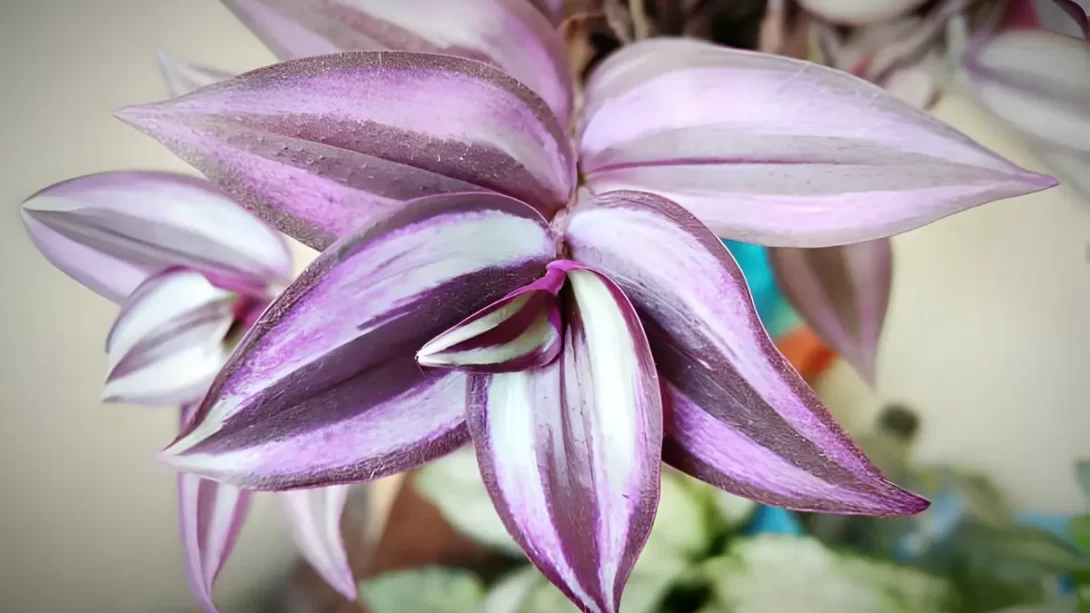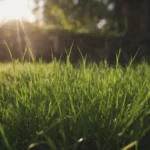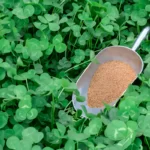The Wandering Jew plant, with its striking foliage and fast-growing nature, is a popular choice for both indoor and outdoor gardening. Known for its vibrant leaves and trailing growth, it can, however, become leggy if not cared for properly. This article aims to provide practical tips and techniques to help you cultivate a bushier, more robust Wandering Jew plant, enhancing its beauty and vitality.
Wandering Jew Plants
Wandering Jew refers to several species in the Tradescantia genus, each known for their distinct, colorful leaves and sprawling growth habit. Common varieties include Tradescantia zebrina, with its silver-striped leaves, Tradescantia fluminensis, known for its glossy green foliage, and Tradescantia pallida, which boasts purple leaves. These plants are appreciated for their adaptability and rapid growth, making them ideal for gardeners looking to achieve quick results.
Ideal Growing Conditions
For a Wandering Jew plant to thrive and become bushy, it requires certain environmental conditions:
- Light: These plants prefer bright, indirect sunlight. Too much direct sunlight can scorch the leaves, while too little light can lead to leggy growth.
- Temperature: They thrive in temperatures between 65-75°F (18-24°C), but can tolerate a range from 50-85°F (10-29°C).
- Humidity: Wandering Jew plants enjoy humid conditions, which can be achieved through regular misting or placing the plant in a naturally humid environment, such as a bathroom.
Planting and Potting
Selecting the right soil and pot is crucial for the health of your Wandering Jew plant:
- Soil: Use a well-draining potting mix, as these plants dislike waterlogged conditions. A mix containing peat, perlite, and vermiculite is ideal.
- Pot: Choose a pot with adequate drainage holes to prevent water accumulation. The pot size should accommodate the plant’s root system, allowing for some growth.
When potting or repotting, be gentle with the roots to minimize stress on the plant. Repotting can be done every one to two years, or when the plant outgrows its current pot. Proper potting encourages a strong, healthy root system, which is essential for bushy growth.
Proper Watering and Feeding
Watering correctly is essential for a bushy and healthy Wandering Jew plant. The soil should be kept moist, but not waterlogged. Allow the top inch of soil to dry out before watering again. Overwatering can lead to root rot, while underwatering can cause the plant to become leggy as it stretches in search of moisture. Use lukewarm water to avoid shocking the plant’s roots.
Feeding the plant also plays a significant role in its growth. Fertilize with a balanced, water-soluble fertilizer every four weeks during the growing season (spring and summer). Reduce feeding in the fall and winter when growth naturally slows down. Proper nutrition will support the plant’s vigorous growth and contribute to its lush, bushy appearance.
Pruning and Pinching for Bushiness
Pruning and pinching are key techniques to encourage a fuller Wandering Jew plant:
- Pruning: Regularly trim back long, leggy stems using clean, sharp scissors. This not only keeps the plant looking tidy but also stimulates new growth from the base and along the stems.
- Pinching: Pinch off the growing tips of the stems using your fingers or pruning shears. This encourages the plant to branch out and become denser.
These practices are best performed in the spring and summer when the plant is actively growing. Regular pruning and pinching not only help in maintaining the desired shape and size but also promote healthier, bushier growth.
Propagation for Fuller Plants
Propagation is another effective way to make your Wandering Jew plant bushier:
- Cuttings: Take stem cuttings about 4-6 inches long, ensuring each cutting has several leaves. Remove the leaves from the bottom inch of each cutting.
- Rooting: Place the cuttings in water or directly into soil. If using water, change it every few days to keep it fresh. Roots should start to develop within a week or two.
- Planting: Once the roots are established, plant the cuttings back into the pot with the parent plant, or into a new pot to create additional plants.
This method not only rejuvenates the main plant by encouraging new growth but also allows you to fill out the plant more by adding new, rooted cuttings to the pot. It’s an easy and effective way to create a lush, dense appearance.
Pest and Disease Management
Maintaining the health of your Wandering Jew plant is crucial for it to become bushy and full. Be vigilant about pests such as spider mites, aphids, and mealybugs, which are attracted to the plant’s moist environment. Regularly inspect the leaves, especially the undersides, for signs of infestation. If pests are detected, treat the plant with a mild insecticidal soap or neem oil, ensuring to follow the product’s instructions.
Diseases like root rot can also affect Wandering Jew plants, often due to overwatering. Ensure proper drainage and avoid letting the plant sit in waterlogged soil. If root rot is suspected, repot the plant into fresh soil and a clean pot, trimming away any rotten roots.
Additional Care Tips
For even growth and a bushier appearance, rotate your Wandering Jew plant regularly to ensure all sides receive equal light. This prevents the plant from leaning towards the light source and becoming lopsided.
During winter, when growth naturally slows down, reduce watering and stop fertilizing. However, ensure the plant still gets enough light during these shorter days. Adjusting care according to the seasons will keep your plant healthy year-round.
Conclusion
Cultivating a bushy Wandering Jew plant involves a combination of proper environmental conditions, regular pruning and pinching, and effective pest and disease management. By providing the right amount of light, water, and nutrients, and by regularly propagating and grooming your plant, you can encourage lush, vibrant growth. Remember, patience and consistent care are key. With time and attention, your Wandering Jew plant will grow into a beautiful, bushy display, adding a splash of color and life to your indoor or outdoor garden.



